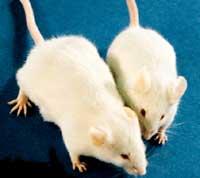Caspas to cure cirrhosis
2001/10/31 Agirre Ruiz de Arkaute, Aitziber - Elhuyar Zientzia
Excessive alcohol and other toxins cause a longer term liver cirrhosis. When an infection or toxins sicken the liver, the growth of muscle cells is activated to repair the damage caused. If the liver damage is chronic, excessive growth occurs and over time a scar is produced that blocks the blood vessel. In this situation, the liver does not receive enough food, which can cause cell death.

However, researchers at the University of California suspected that a messenger protein could have a lot to say in this process and went to work to learn about its function. Apparently, the protein C/CCPV, when the phosphorus group is joined, acquires the ability to activate the caspases. Caspas control the formation of liver cells and when they activate C/CCPV the liver will stop doubling. However, when CCPV is joined by phosphorus, the formation of cells will be retaken, as it will lose its activation capacity.
As they know, researchers have replaced the conventional protein gene C/CCPV with a C/CCPV that cannot bind the phosphorus group. These transgenic mice, even with dangerous toxins, have not developed cirrhosis, but common mice do. This time, the possibility of using this protein transformed into humans is being investigated, as it can be useful to cure cirrhosis.
However, what has most surprised biologists is the variety of functions that has the protein C/CCPV, which until now was known as a protein that participated in the regulation of transcription of DNA. It is not normal for a single protein to have to perform different functions.

Gai honi buruzko eduki gehiago
Elhuyarrek garatutako teknologia




